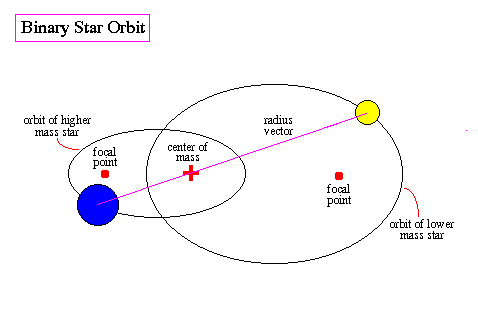Important Facts For Prelims
Astronomers Uncover Hot Helium Stars
- 27 Feb 2024
- 5 min read
Why in News?
Astronomers have recently identified a group of hot, helium-covered stars found in binary systems, potentially deepening our understanding of stellar dynamics and evolution.
What are the Major Outcomes of the Discovery?
- Utilising a telescope capable of detecting ultraviolet light, astronomers observed around half a million stars in the Large and Small Magellanic Clouds.
- The Large Magellanic Cloud and the Small Magellanic Cloud are two dwarf galaxies that are companions to the Milky Way.
- Some stars exhibited unusual speeds, hinting at the presence of companions (binary nature) affecting their motion.
- Subsequent analysis of the optical spectra of 25 stars revealed their elemental composition, leading to the identification of different star classes.
- Stars were categorised into three classes:
- Class 1 (helium-rich, hydrogen-depleted)
- Class 2 and Class 3 (helium-rich, with hydrogen)
What is the Binary System of Stars?
- About: It refers to the pair of stars that are gravitationally bound to each other and orbit around a common centre of mass.
- An estimated 85% or more of stars are actually part of binary or even multiple-star systems.
- Classification:
- Visual Binaries: These are the easiest to identify and consist of two stars that can be directly resolved and separated using a telescope.
- Spectroscopic binaries: These stars are too close together to be resolved visually even with powerful telescopes.
- However, their presence can be detected by observing periodic shifts in their spectral lines.
- Eclipsing Binaries: These binary systems are aligned in a way that one star periodically passes in front of the other from our perspective.
- This event creates a temporary dip in the brightness of the combined system, allowing astronomers to confirm the presence of the unseen companion and study its properties.
- Astrometric Binaries: These binary systems are detected indirectly by measuring the wobbling motion of a single star.
- This wobbling is caused by the gravitational pull of the unseen companion star.
- Confirmation of Binary Systems: When a star exhausts its fuel, gravity takes over, leading to a supernova explosion that strips its outer layers.
- Some supernova lack hydrogen, suggesting pre-explosion stripping of the outer layer.
- This can happen in binary systems, where one star's gravity removes the outer hydrogen layer from its companion, leaving behind a helium-rich star.
- Astronomers have only found one such binary system so far.
- Some supernova lack hydrogen, suggesting pre-explosion stripping of the outer layer.

How do Stars Maintain their Presence Over Billions of Years?
- Stars maintain their presence over billions of years through a delicate balance between two opposing forces: nuclear fusion and gravity.
- For example, despite Newton's Law of Universal Gravitation suggesting the Sun's gravitational collapse, nuclear fusion at its core acts as a vital stabilising force.
- Nuclear Fusion involves the merging of nuclei of light elements like hydrogen and helium, releasing substantial heat energy.
- This energy, in turn, creates internal pressure, counteracting the gravitational force, thus maintaining equilibrium.
- Therefore, Stars like the Sun sustain this balance between outward fusion energy and inward gravitational pull, ensuring their enduring presence over billions of years.
UPSC Civil Services Examination, Previous Year Question (PYQ)
Prelims:
Q. The terms ‘Event Horizon’, ‘Singularity’, ‘String Theory’ and ‘Standard Model’ are sometimes seen in the news in the context of (2017)
(a) Observation and understanding of the Universe
(b) Study of the solar and the lunar eclipses
(c) Placing satellites in the orbit of the Earth
(d) Origin and evolution of living organisms on the Earth
Ans: (a)
Mains:
Q.How does the Juno Mission of NASA help to understand the origin and evolution of the Earth? (2017)




